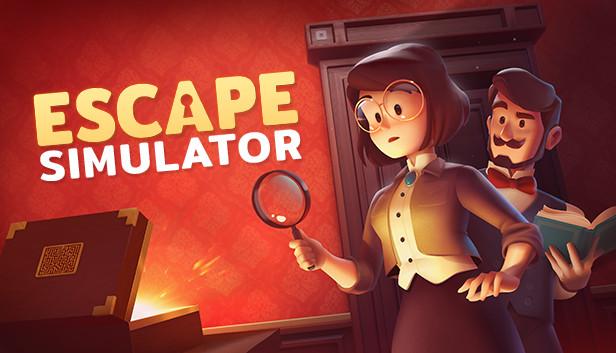Escape Simulator stands as a quintessential example of how meticulously crafted puzzle mechanics can enhance gameplay, foster collaboration, and emulate the tangible suspense of physical escape rooms within a virtual setting. By delving into its formal elements, mechanism of play, seamless integration of both single and multiplayer modes, and loops and arcs architecture we can explore how these mechanics not only meet but surpass its goals, offering a rich and immersive puzzle-solving journey. The mechanics of the puzzles in Escape Simulator influences the player’s experience by requiring a blend of cognitive skills and physical interaction, which intensifies engagement and promotes a dynamic learning process throughout the game.
At its core, Escape Simulator leverages an array of interactive puzzle mechanics that are integral to the player’s cognitive and emotional engagement. Each room in the game is designed with an intricate array of clues and contraptions that require manipulation and critical thinking. This design choice elevates the gameplay by transforming each puzzle from a mere challenge to solve into a mystery to unravel, making the process deeply immersive. For instance, in the Labyrinth of Egypt room, players encounter hieroglyphic puzzles that demand not only a keen eye for detail but also an ability to think laterally. This type of puzzle mechanics fosters a sense of discovery and accomplishment that is profoundly satisfying.
From a game designer’s perspective, the joy in Escape Simulator arises not just from solving puzzles, but from understanding how these puzzles are layered and structured. One key component of such game experience arise from the open world concept. Initially, the abundance of clues and objects can be overwhelming—I often find myself spending the first few minutes in a state of pleasant confusion, trying to piece together how various elements might interact. Often, I have to run around the whole map a few times to just understand where to start or what am I even looking for. However, this initial disorientation (or frustration at times) is by design, cleverly mimicking the real-life experience of entering an unknown environment filled with puzzles. As I progress, gathering clues and testing hypotheses, the structure of the puzzles becomes clearer, and the game transitions from an exploratory phase into a more targeted problem-solving endeavor.
Although I often play this game by myself, this game can be an interesting multiplayer game as well. The game’s multiplayer mode adds a layer of hectic, real-time collaboration that can dramatically alter the play experience. Every time I play with others, the game becomes significantly more chaotic, with ideas and suggestions tossed around constantly—“No, go back, like left, no BACK!” or “Wait, I think this is wrong guys. We should be going back to the waterfall clue.” The person controlling the character must juggle not only the game’s puzzles but also the barrage of input from teammates, making it a real-life puzzle in itself. This dynamic can make the gameplay both more challenging and more entertaining, as players must not only solve the game’s puzzles but also navigate the complexities of group dynamics and communication.
The gameplay of Escape Simulator is structured around small, iterative loops within each level where players interact with puzzles, learn from failures, and apply new strategies. These loops provide immediate feedback and gratification, crucial for maintaining player engagement and motivation. As players advance through different rooms and scenarios, they not only accumulate knowledge and skills related to specific puzzles but also develop a broader understanding of how to approach problem-solving within the game’s framework. This cumulative learning experience represents a larger arc in the overall game. Players start by learning the basic controls—how to pick up and manipulate objects, how to examine items closely, and how to navigate the virtual space. As the game progresses, these basic skills are built upon with more complex logical processes and puzzle-solving techniques. By the game’s conclusion, players have not just navigated a series of rooms but have journeyed through a comprehensive learning curve that enhances their overall puzzle-solving acumen.
The inclusion of community-created rooms further enriches the experience, as it introduces a variety of puzzles that vary not only in complexity but also in creative interpretation. Each new room brings a fresh challenge and a new story, extending the game’s lifespan and keeping the community actively engaged. This feature demonstrates a deep understanding of one of the game’s fundamental goals: to keep the puzzle-solving experience dynamic and ever-evolving.
Escape Simulator thus serves as a prime example of how thoughtful game design can create an engaging, rewarding, and continuously surprising puzzle-solving environment. It achieves a delicate balance between offering just enough guidance to keep players motivated, while providing them enough freedom to explore and deduce on their own terms. Although not a game that I would continuously play for hours on end and daily, Escape Simulator’s continuous updates continuously drag me back to the puzzles every month or so. As both a player and a designer, I appreciate how the game respects the intelligence of its audience, challenges them appropriately, and provides a fulfilling sense of achievement—a testament to its success as a leading puzzle simulation game.




